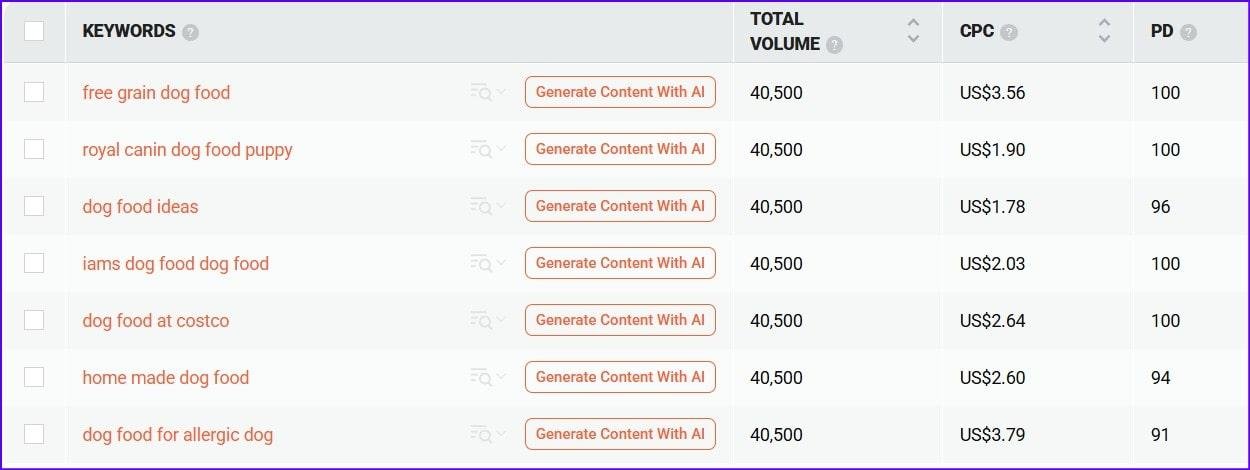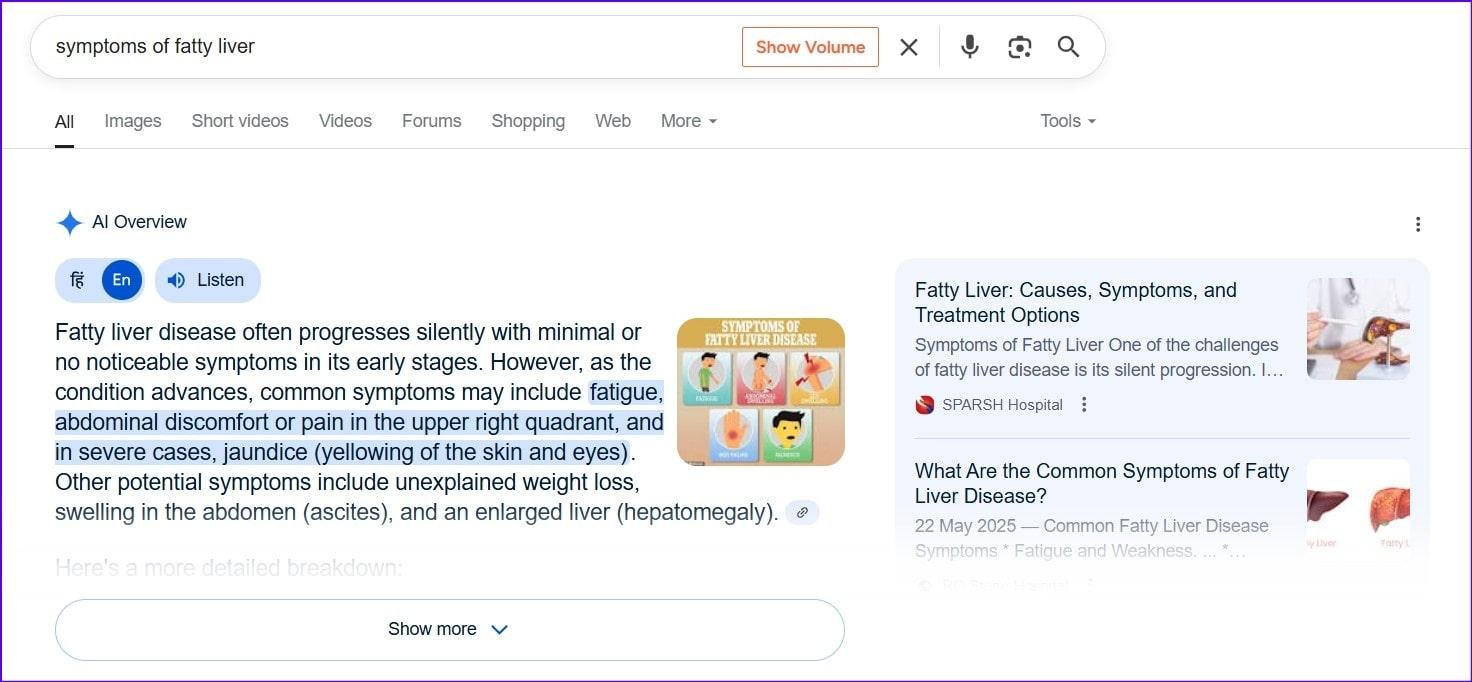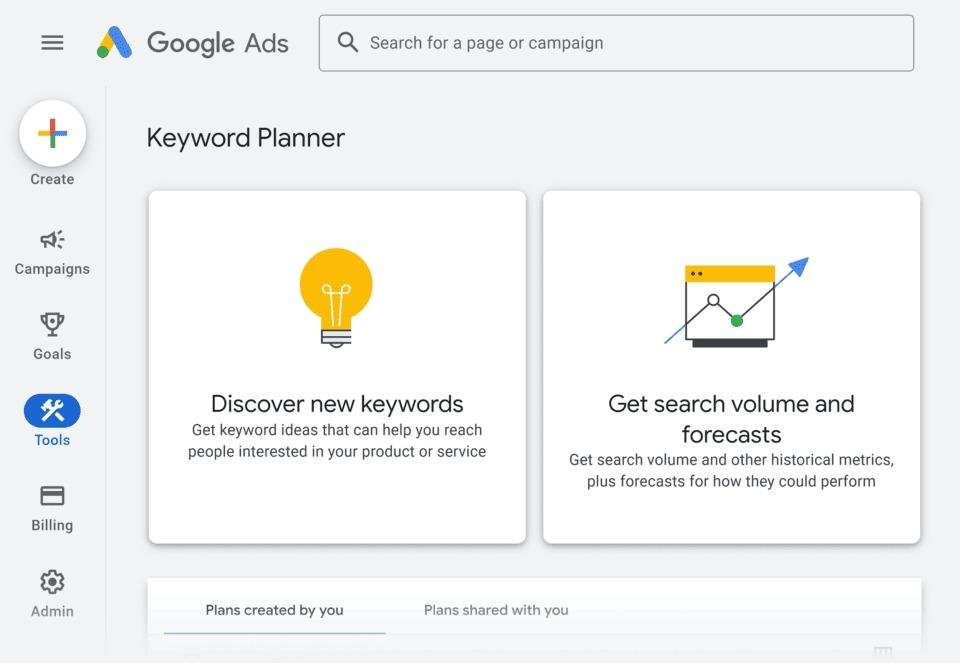Picture this: You launch your dream online business selling handmade candles. Six months later, you’ve barely made a sale. Meanwhile, someone selling “soy wax melts” can’t keep up with orders.
What’s the difference? Three words that changed everything.
Every day, billions of people type words into search boxes, social media platforms, and online marketplaces. They’re looking for products, services, information, and solutions.
And the words they use reveal exactly what they want and how badly they want it.
Some phrases are worth thousands of dollars. Others are worthless. Some tell you someone’s ready to buy right now. Others show they’re just browsing.
The difference between success and failure online often comes down to knowing which words matter.
But how do you find these golden phrases? How do you know which ones to focus on? That’s what I’ll talk about in this guide on keyword research.
Disclaimer: If you buy any products through links on this site, I may earn a commission. But it doesn't make any difference to your cost, and it helps me keep this blog running. So you could always read my articles for free.
What is keyword research?
Now that you understand why certain words can make or break your online success, let’s explore what keyword research actually is and how it works.
At its core, keyword research is the process of discovering what words and phrases people type into search engines, social media platforms, and online marketplaces.
Think of it as eavesdropping on millions of conversations where people tell you exactly what they want, how they describe their problems, and what solutions they’re seeking.
Here’s how you can find the right keyword. Say you sell organic dog food. You might assume people search for “healthy dog food” when looking for your product.
But while researching keywords, you discover they actually search for “grain-free dog food for allergies” ten times more often.

That’s valuable information that changes everything about how you present your product online. And even how you decide what to sell.
Beyond just finding popular search terms, researching keywords reveals the intent behind those searches.
For instance, someone typing “best running shoes” is probably comparing options before buying. But someone searching “Nike Air Max size 10 discount” knows exactly what they want and is ready to purchase.
The process involves using specialized tools and techniques to uncover these insights. You’ll learn how many people search for specific terms each month, how difficult it is to rank for those terms, and what related phrases people also use.
Most importantly, keyword research helps you speak your audience’s language. Instead of guessing what words resonate with them, you know for certain.
This knowledge shapes everything from your product descriptions and blog posts to your ad campaigns and social media content.
Why is keyword research important?
Understanding what keyword research is only tells half the story. Let’s examine why this practice matters for your online success and how it impacts different aspects of your digital presence.
It connects you with the right audience
The biggest benefit of keyword research is finding people who actually want what you offer.
For example, a yoga instructor might create content about “advanced yoga poses,” but keyword research reveals that beginners searching for “yoga for back pain relief” outnumber advanced practitioners 50 to 1.
By targeting the right keywords, you reach people actively looking for your solutions.
It saves time and money
Without keyword research, you’re essentially guessing what content to create or which ads to run.
Consider this scenario: You spend months writing about “eco-friendly packaging” when your potential customers actually search for “biodegradable shipping materials.” Those wasted months could have brought in customers instead.
It reveals market opportunities
Sometimes keyword research uncovers gaps your competitors missed. Take the case of a small coffee roaster who discovered thousands of people searching for “coffee subscription for offices” while established brands focused only on individual consumers. That insight led to a profitable new business direction.
It improves your content strategy
Besides identifying topics people care about, keyword research shows you how to structure your content. You learn which questions need answering, what problems require solutions, and how detailed your information should be.
It helps you understand buyer intent
Most importantly, keywords tell you where someone is in their buying journey. Someone searching “what is cold brew coffee” needs education, while “best cold brew maker under $50” indicates they’re ready to buy. This knowledge helps you create the right content for each stage.
Keyword research fundamentals
Before you dive into actual keyword research, you need to understand three fundamental concepts that form the backbone of any successful strategy.
Let’s explore the different types of keywords, the metrics that matter, and how search intent shapes everything.
Types of keywords
Not all keywords are created equal. Understanding their differences helps you find keywords that are right for your goals.
Short-tail keywords
These are broad, general terms consisting of one or two words. Think “running shoes” or “pizza delivery.” While they attract massive search volumes, they’re incredibly competitive and vague. For instance, someone searching “coffee” could want anything from brewing tips to nearby cafes.
Long-tail keywords
In contrast, long-tail keywords contain three or more words and get very specific. Examples include “waterproof running shoes for winter” or “gluten-free pizza delivery downtown Seattle.”
Though fewer people search for these phrases, those who do know exactly what they want. Here’s the interesting part: long-tail keywords make up about 70% of all searches.
Branded vs. non-branded keywords
Branded keywords include company or product names like “Nike Air Jordan” or “Starbucks menu.” Non-branded keywords focus on generic terms like “basketball shoes” or “coffee shop near me.”
While branded searches often convert better, non-branded keywords help you reach new customers who don’t know your business yet.
Local keywords
These keywords include geographic locations, such as “dentist in Chicago” or “best Thai restaurant Brooklyn.”
They’re essential for businesses serving specific areas. Even online businesses benefit from local keywords when targeting regional markets.
Keyword metrics
Now that you know the types, let’s examine how to evaluate keywords using key metrics.
Search volume
This number tells you how many people search for a keyword each month. For example, “weight loss tips” might get 100,000 monthly searches, while “weight loss tips for women over 50” gets 5,000. Higher volumes mean more potential traffic, but also more competition.
Keyword difficulty
Also called competition score, this metric shows how hard it is to rank for a keyword. It’s usually expressed as a percentage or score from 0-100.
A keyword with 90% difficulty means you’ll compete against established websites with strong authority. Meanwhile, a 20% difficulty score suggests easier ranking opportunities.
Cost per click (CPC)
Even if you’re not running ads, checking CPC during your keyword research can reveal valuable information. High CPC keywords indicate commercial value because advertisers willingly pay more for those clicks.
For instance, “buy life insurance online” has a much higher CPC than “what is life insurance,” telling you which is the right keyword to attract buyers versus browsers.
Click-through rate (CTR)
This metric shows what percentage of searchers actually click on results. Some searches, like “what time is it in Tokyo,” get answered directly in Google, resulting in low CTR despite high volume. Understanding CTR helps you avoid targeting keywords that don’t drive actual traffic.
Types of search intent
Behind every search lies an intention. Recognizing these intents helps you create content that matches what searchers want.
Informational intent
Most searches fall into this category. People want to learn something, solve a problem, or answer a question.

Examples include “how to tie a tie,” “why do dogs bark,” or “symptoms of flu.” These searchers aren’t ready to buy anything yet – they’re gathering information.
To identify informational keywords, look for phrases starting with:
- How to
- What is
- Why does
- Best way to
- Guide to
Navigational intent
Here, searchers know exactly where they want to go. They’re looking for a specific website or page. Think “Facebook login,” “Amazon customer service,” or “New York Times subscription.” These keywords might seem less valuable, but they’re crucial for brand visibility.
Commercial intent
This intent sits between researching and buying. Searchers are comparing options, reading reviews, or looking for the best deals.
Keywords like “best laptop for students,” “iPhone vs Samsung,” or “Mailchimp alternatives” show commercial intent. These searchers will likely buy soon but need more information first.
Transactional intent
These are your money keywords. Searchers know what they want and are ready to take action. Look for phrases containing the following terms during your keyword research:
Buy
Order
Discount
Coupon
Free shipping
Price
Examples include “buy Nike running shoes size 10,” “pizza delivery near me,” or “WordPress hosting discount code.”
Understanding mixed intent
Here’s where it gets tricky: many keywords show mixed intent. Take “coffee maker” – some searchers want reviews (commercial), others want to buy immediately (transactional), and some just want to understand how they work (informational).
The key is analyzing the search results. If Google shows mostly product pages and shopping results, it interprets the keyword as transactional. If you see mostly blog posts and guides, Google sees it as informational.
By mastering these fundamentals – keyword types, metrics, and search intent – you build a solid foundation for effective keyword research.
Each element plays a crucial role in helping you find keywords that not only drive traffic but attract the right visitors who want what you offer.
Top keyword research tools
Now that you understand keyword research fundamentals, you need the right tools to put that knowledge into practice. Let’s explore popular tools for finding the right keywords, examining their features, strengths, and limitations to help you choose what works best for your needs.
Google Keyword Planner
Google’s own keyword tool was originally built for advertisers, but it remains a valuable resource for anyone doing keyword research.
Since it pulls data directly from Google, you get insights straight from the source. The tool is completely free, though you need a Google Ads account to access it.

Key features:
Search volume ranges directly from Google
Cost-per-click data for all keywords
Keyword grouping and organization tools
Historical search trend data
Location-based keyword data
Pros:
Completely free to use
Data comes directly from Google
Excellent for local keyword research
Shows seasonal trends clearly
Integrates with Google Ads campaigns
Cons:
Shows only broad volume ranges unless you’re running ads
Limited competitor analysis features
Focuses heavily on paid search metrics
My verdict: Best free option for beginners and essential for anyone running Google Ads, but you’ll need additional tools for comprehensive research.
Ahrefs Keywords Explorer
Ahrefs has built a reputation as one of the most comprehensive SEO tools available. Their Keywords Explorer goes beyond basic metrics, offering detailed insights into keyword difficulty, click potential, and related terms. It’s particularly strong for competitive analysis.
Key features:
Keyword difficulty score based on backlink data
Click-through rate estimates
Parent topic identification
SERP overview with ranking pages
Question-based keyword suggestions
Pros:
Extremely accurate keyword difficulty scores
Shows actual traffic potential, not just search volume
Excellent for finding content gaps
Covers multiple search engines including YouTube and Amazon
Updates data frequently
Cons:
Higher price point than most alternatives
Can be overwhelming for beginners
Limited local keyword data compared to other tools
My verdict: Worth the investment for serious content creators and SEO professionals who need detailed competitive intelligence and accurate difficulty scores in their keyword research.
Semrush Keyword Magic Tool
SEMrush offers one of the largest keyword databases available, with over 20 billion keywords.
Their Keyword Magic Tool excels at finding related keywords and organizing them into meaningful groups. It’s particularly useful for building comprehensive content strategies.
Key features:
Massive keyword database
Automatic keyword grouping
Question-based keyword filters
Intent classification for all keywords
Competitive density scores
Pros:
Largest keyword database in the industry
Excellent filtering and grouping options
Strong international keyword data
Includes trending keywords and topics
Integrates with other SEMrush tools seamlessly
Cons:
Premium pricing for full features
Learning curve for new users
Some features require higher-tier plans
My verdict: Ideal for agencies and businesses needing extensive keyword data across multiple countries and languages, with powerful organization features.
Ubersuggest
Neil Patel’s Ubersuggest has evolved from a simple suggestion tool into a full-featured keyword research platform.
It strikes a balance between functionality and affordability, making it popular among small businesses and individual bloggers for finding the right keywords.
Key features:
Lifetime pricing option available
Content ideas based on keywords
Domain overview for competitors
Historical ranking data
Chrome extension for on-page analysis
Pros:
Very affordable compared to competitors
Simple, user-friendly interface
Includes basic rank tracking
Shows content ideas with social shares
Good for beginners
Cons:
Smaller database than premium tools
Less accurate difficulty scores
Limited advanced filtering options
My verdict: Perfect starting point for bloggers and small businesses wanting affordable access to decent keyword data without breaking the bank.
Moz Keyword Explorer
Moz brings a unique approach to keyword research with their Priority score, which combines multiple metrics into one actionable number.
They focus on organic click-through rate data, helping you avoid keywords dominated by ads or SERP features.
Key features:
Priority score combining volume, difficulty, and CTR
Organic CTR analysis
SERP analysis with ranking factors
Keyword lists with tracking
Related keywords with lexical similarity
Pros:
Excellent for prioritizing keyword opportunities
Strong focus on organic traffic potential
Clean, intuitive interface
Good educational resources included
Accurate SERP feature predictions
Cons:
Smaller keyword database than Ahrefs or SEMrush
More expensive than some alternatives
Limited PPC-focused features
My verdict: Great for content-focused SEO strategies where organic CTR matters more than raw search volume, with helpful prioritization features.
KeywordTool.io
This tool specializes in autocomplete suggestions from multiple platforms. Unlike traditional keyword tools, it doesn’t require any account to start using basic features.
It’s particularly valuable for finding long-tail keywords and understanding how people actually search.
Key features:
Autocomplete suggestions from multiple platforms
Support for Google, YouTube, Bing, Amazon, and more
Question-based keyword generation
No account required for basic use
Export functionality for all results
Pros:
Finds keywords other tools miss
Works for multiple search engines and platforms
Great for long-tail keyword discovery
Simple, fast interface
Free version available
Cons:
No search volume in free version
Limited competitive analysis
Requires paid plan for essential metrics
My verdict: Excellent supplementary tool for discovering long-tail keywords and platform-specific searches. This is something that traditional tools for finding keywords might overlook.
AnswerThePublic
AnswerThePublic takes a visual approach to keyword research, focusing on questions and prepositions. It helps you understand not just what people search for, but why they search. The tool presents data in unique visualization formats that make patterns easy to spot.
Key features:
Visual keyword mapping
Question-based keyword discovery
Preposition and comparison keywords
Alphabetical keyword variations
CSV export options
Pros:
Unique visualization helps spot patterns
Excellent for content ideation
Finds natural language queries
Free searches available daily
Great for understanding search intent
Cons:
Limited search volume data
Only two free searches per day
No keyword difficulty metrics
My verdict: Perfect for content creators seeking question-based keywords and understanding user intent, especially when combined with other metrics-focused tools.
How to conduct keyword research
With your tools ready and fundamentals understood, it’s time to start your actual keyword research. This step-by-step process will guide you from initial ideas to a prioritized list of target keywords you can confidently pursue.
Define your goals and audience
Before typing anything into a keyword tool, you need clarity on two things: what you want to achieve and who you’re trying to reach. These decisions shape every keyword choice you make.
Start by asking yourself specific questions. Are you trying to sell products, generate leads, or build brand awareness?
For instance, an online course creator might focus on keywords that attract learners ready to invest in education, while a blog monetized through ads might target high-volume informational keywords.
Next, picture your ideal reader or customer. What problems keep them up at night? How do they describe these problems?
A financial advisor targeting young professionals would try to find keywords that are different from those focusing on retirees. Young professionals might search “how to start investing with $1000,” while retirees look for “safe withdrawal rates in retirement.”
Document these insights before moving forward. They’ll serve as your north star when you’re drowning in keyword data later.
To learn more, read this article on setting keyword research goals.
Brainstorm your seed keywords
Seed keywords are your starting points – the obvious terms that describe your business, products, or content topics. Think of them as doors that open into rooms full of keyword opportunities.
Begin with the basics. If you run a bakery, your seeds might include “bakery,” “cakes,” “bread,” and “pastries.”
But don’t stop there. Consider how customers describe what you offer. They might not search for “artisanal sourdough” but rather “crusty bread” or “bread with holes.”
Here’s a practical exercise: spend 10 minutes writing down every term related to your business. Include:
- Products or services you offer
- Problems you solve
- Benefits you provide
- Industry jargon AND plain English alternatives
For example, a web designer’s list might include both “responsive design” (industry term) and “website that works on phones” (how clients describe it).
For more information, check out this guide on seed keywords.
Find similar keywords
Once you have seed keywords, it’s time to expand them into variations. Similar keywords are different ways of saying the same thing. This step in keyword research helps you catch searches you might otherwise miss.
Take your seed keywords to your chosen tool and look for close variations. For the seed keyword “running shoes,” similar keywords might include:
- Running sneakers
- Jogging shoes
- Marathon shoes
- Athletic running footwear
Pay attention to regional differences too. Americans search for “sneakers” while British users prefer “trainers.” Even within the US, some regions say “tennis shoes” regardless of the sport.
Don’t just rely on tools here. Think about synonyms, abbreviations, and common misspellings. If you’re in the tech industry, remember that people might search for “software as a service,” “SaaS,” or even “sass” when they mean SaaS.
For more details, read this article on how to find similar keywords.
Find related keywords
While similar keywords are variations of the same concept, related keywords explore connected topics your audience cares about. This step often reveals the most valuable opportunities.
Let’s say you started with “yoga mat.” Related keywords might include:
- Yoga blocks
- Hot yoga towel
- Yoga mat cleaner
- Best thickness for yoga mat
- How to clean yoga mat
These aren’t synonyms for yoga mat, but they show what else your audience searches for. More importantly, they reveal the complete journey your audience takes.
Use your keyword tool’s “related keywords” or “questions” features. But also think logically about the user journey.
Someone searching for “beginner yoga poses” will eventually need “yoga equipment for beginners” and later “advanced yoga techniques.”
The magic happens when you find related keywords with less competition. Perhaps everyone targets “yoga for beginners,” but “yoga for stiff people” has decent volume with less competition.
Analyze and prioritize target keywords
Now comes the crucial part of keyword research: deciding which keywords deserve your effort. With possibly hundreds of keywords in your spreadsheet, you need a system to identify the best opportunities.
First, eliminate keywords that don’t match your goals. High-volume keywords look attractive, but if they bring the wrong audience, they’re worthless. A luxury watch retailer shouldn’t target “cheap watches” regardless of search volume.
Next, assess the competition realistically. Use these factors to evaluate difficulty:
Who currently ranks for this keyword?
How strong are their websites?
How well does their content match search intent?
Can you create something significantly better?
For example, if search results for your keyword show only major publications like Forbes or WebMD, you might need to find less competitive alternatives. Balance is key. The right keyword has:
- Enough search volume to matter
- Competition you can realistically beat
- Strong relevance to your goals
- Clear user intent you can satisfy
Create a scoring system that works for you. Some people use spreadsheets with weighted scores for volume, difficulty, and relevance. Others prefer simpler high/medium/low ratings.
Consider starting with less competitive long-tail keywords. If you’re new to SEO, targeting “best running shoes for flat feet” might bring faster results than fighting for “running shoes.”
Finally, group your prioritized keywords by topic or intent. This organization helps you plan content that targets multiple related keywords naturally, rather than creating separate pages for every slight variation.
Remember, keyword research isn’t a one-time activity. Markets change, new terms emerge, and competition shifts. Schedule regular reviews to keep your keyword strategy fresh and effective.
To learn more, check out this post on prioritizing keywords.
Additional tips, tricks, and strategies
Beyond the basic process, experienced keyword researchers use specific techniques to uncover opportunities others miss. These strategies will help you work smarter and find keywords that actually drive results.
Conduct competitor keyword analysis
Your competitors have already done hours of keyword research – why not learn from their work? By analyzing which keywords bring them traffic, you can discover proven opportunities and gaps they’ve missed.
Start by identifying three to five competitors who rank well in your space. Use tools like Ahrefs or Semrush to see their top-performing keywords.
For instance, if you notice a competitor gets significant traffic from “eco-friendly packaging solutions” but doesn’t rank for “biodegradable packaging alternatives,” you’ve found a potential opportunity.
Don’t just copy their keywords blindly, though. Look for patterns in what works and adapt them to your unique angle.
For more details, read this blog post on competitive keyword analysis.
Create content that matches search intent
Finding keywords is only half the battle – your content must deliver what searchers expect. Take the keyword “apple pie recipe.”
If searchers want a simple recipe but you write about the history of apple pie, you’ll fail regardless of your keyword optimization.
Here’s how to check intent: Google your target keyword and study the top results. Are they how-to guides, product pages, or comparison articles? Match that format.
If the top results for “best laptops for students” all compare multiple options with prices, don’t write a single product review.
To learn more, go through this article on steps to align your content with search intent.
Don’t rely just on tools
Keyword tools miss many valuable opportunities because they work from existing data. Real people, however, create new searches every day.
Listen to your customers’ actual questions to find the right keywords. Check your email inbox, social media comments, and customer service logs.
For example, a plumber might discover customers often ask about “weird smell from bathroom sink” – a keyword no tool would suggest but perfectly describes the problem.
Similarly, browse forums, Reddit threads, and Q&A sites in your industry. People use natural language there that reveals exactly how they search.
Use permutations and combinations
One seed keyword can generate dozens of variations through simple combinations. This technique works especially well for local businesses and e-commerce sites.
Take “wedding photographer” and combine it with:
- Locations: “wedding photographer Brooklyn”
- Styles: “rustic wedding photographer”
- Budget: “affordable wedding photographer”
- Specifics: “beach wedding photographer”
You can even combine multiple modifiers: “affordable beach wedding photographer Miami.” While individual searches might be low, collectively these variations add up to significant traffic.
Target only one or two keywords per page
Trying to rank one page for dozens of keywords dilutes your focus and confuses search engines. Instead, choose one primary keyword and one or two closely related secondary keywords per page.
For example, if your primary keyword is “homemade pizza dough,” your secondary keyword might be “pizza dough recipe from scratch.” They’re different enough to capture various searches but similar enough to target naturally in the same content.
This focused approach helps you create content that thoroughly satisfies search intent rather than superficially touching multiple topics. Remember, it’s better to rank well for one valuable keyword than poorly for ten.
Final thoughts on keyword research
Keyword research might seem overwhelming at first, but it’s really about understanding how your audience searches for what you offer.
You’ve learned the fundamentals, explored the tools, and discovered practical strategies to find keywords that drive value.
Remember, perfect keyword research doesn’t exist. Start with what you know, test different approaches, and refine your strategy based on results. Focus on keywords that align with your goals and match what searchers actually want.
The most important step? Taking action. Pick one technique from this guide and try it this week.
Whether you’re analyzing a competitor or brainstorming seed keywords, every small step builds your expertise. Over time, researching keywords becomes second nature – just another tool in your kit for connecting with the right people online.
Did I miss anything? Did you try these tips? Do you have any questions or comments? Share your thoughts below in the comments section.



